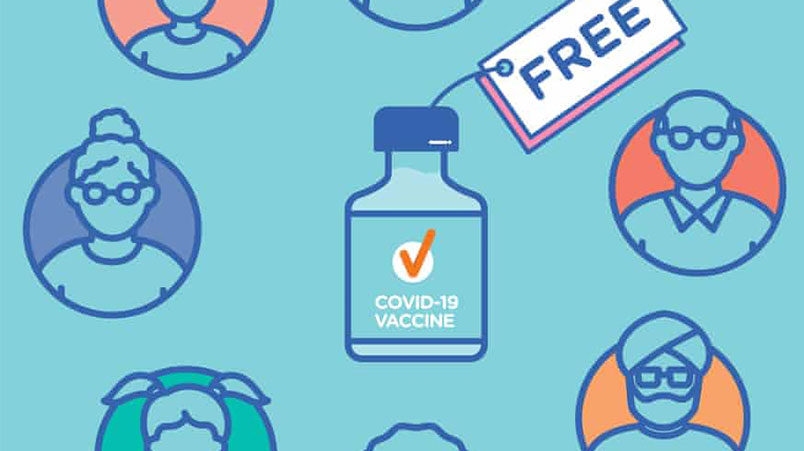Federal government shakes up $100m advertising, PR procurement to curb agency ‘gaming’, make better ads

The biggest shake-up in government advertising and communications procurement in 30 years is about to show whether PwC's new agency "village" approach to government communications will mean less bland, risk-averse and more impactful campaigns. A vaccine rollout is set to be the first under the new model which could spell the end of agencies gaming federal government consumer pre-testing research in order to win piecemeal work via the old, much-maligned multi-agency pitch process.
What you need to know:
- The federal government has completed a PwC-led strategic review of its advertising and comms services procurement.
- The model sees 20 agencies corralled into villages that serve specific government departments, initially on three-year contracts.
- Its aim is to create better ads and outcomes over inefficient piecemeal approaches.
- Under the old regime, agencies had learned to “game” government-appointed research agencies in order to score highly and win short-term contracts.
- But ticking procurement boxes often led to boring, ineffective ads – a current vaccination campaign for under 40s from BMF has been cited as one of many examples from the Feds.
- BMF, Clemenger Melbourne, TBWA Melbourne, Ogilvy and The Monkeys are the contracted ad agencies tasked with delivering creative cut-through.
There was a way of gamifying how you would win that pitch brief – and all agencies would talk about it. There was a methodology to the way they researched those ideas. Safe, visually mnemonic ideas would research well.
Gaming changer
The federal government has completed the biggest shake-up of advertising and communications services in 30 years, adopting an agency ‘village’ model and shifting away from piecemeal pitches in a bid to deliver sharper, more effective campaigns that prioritise real world action above high research scores.
The first work under the so-called Government Communications Campaign Panel (GCCP) model is due within weeks and comes as the federal government faces mounting pressure to ensure its next vaccination ad campaign moves the needle.
The restructure aims to address long held frustrations around inefficient government procurement – whose processes ad agencies had worked out how to “game” in order to secure contracts.
If you're building a partnership together, building trust, there is a greater likelihood of being able to use creativity as a lever to produce more interesting work. And it is much more efficient than five agencies pitching for every single campaign.
Longer view
Under the old Campaign Advertising Supplier Register (CASR) model, pitches were required for every campaign. These usually involved up to five agencies fighting for a short-term contract that only one could win.
As a result, some providers became highly adept at making sure their work ticked all the boxes set out by government appointed research agencies to pre-test campaigns, who scored which agency work was landing best with messaging to the public. But it often failed to account for impact, or the ability to gain and retain consumer attention with cut-through creative in the first place. Too often, the upshot was bland work and robotic messaging.
A number of research companies remain central to the new model, including global research firms Ipsos and Kantar, now owned by Bain Capital after it acquired the business from WPP in 2019.
Under the new model, some 20 agencies – across advertising, market research, public relations and specialist comms providers – are co-located into multi-disciplined ‘villages’ and in the main are assigned to specific government departments.
The idea is to create longer-term, meaningful, collaborative work that actually grabs attention and drives action.
Or as the Department of Finance told Mi3: “By streamlining procurement processes and encouraging collaboration between providers, the GCCP promotes creative outcomes and campaign effectiveness.”
Tourism Australia, one of the few federal government accounts retained on a three-year basis, tends to deliver much more creative work as a result of that approach.
Village people
The three-year contracts now in effect mean agencies that failed to make the cut are likely to be shut out of government contracts until 2024.
Even then the new incumbents – which include BMF, Clemenger Melbourne, TBWA Melbourne, Ogilvy and The Monkeys – have the chance to win extensions up to 2027.
The new structure follows a strategic review from PwC which then undertook a procurement and workshop process over the course of last year before Finance finalised the contracts earlier this year.
As yet, no work has emerged from the new village approach, but the new vaccine work from BMF is due imminently. A Finance department spokesperson told Mi3 that “campaigns are being transitioned to the new arrangements by August 2021”.
The 15 other firms on the books are:
- New South Wales: 33 Creative, Cox Inall Ridgeway, Cultural Perspectives, Embrace Society, Fifty-Five Five, Horizon Communication Group, Ipsos Public Affairs and Kantar Public Australia.
- Victoria: Cox Inall Change, CultureVerse, Fenton Strategic Communications, ORIMA Research, Think HQ and Whereto Research Based Consulting.
- Queensland: Carbon Creative.
It is understood there is some leeway with the structure, and not all federal government work is yet within the GCCP model. VMLY&R for example, still handles Defence Force Recruitment, a contract it won in January 2019.
Federal government’s media account, handled by UM, was not part of the overhaul. The new arrangements apply to all campaigns with a media spend of $500,000 or above.
